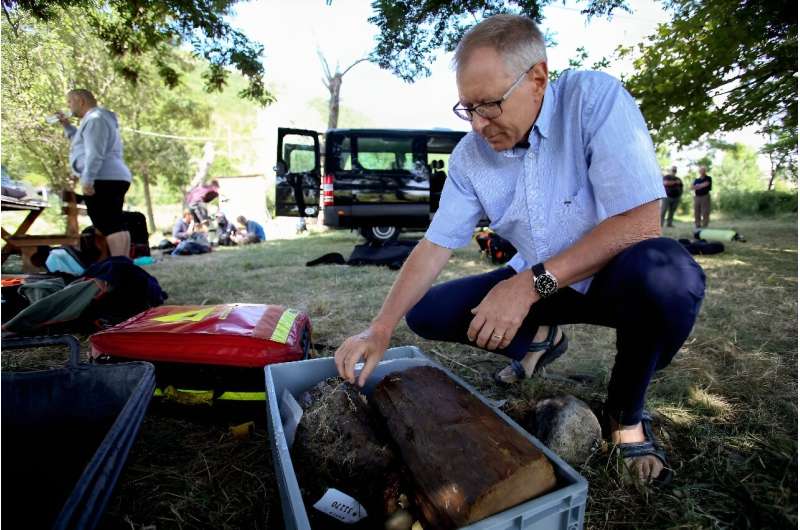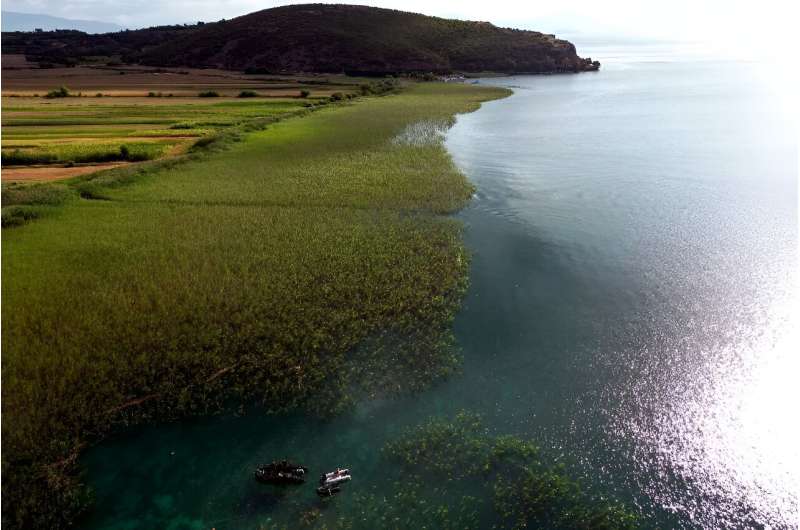Under the turquoise waters of the “Pearl of the Balkans” Lake Ohrid, scientists have discovered one of the oldest inhabited communities in Europe and are trying to unravel the mystery of why it is hidden behind a defensive tower fortress.
Archaeologists believe the lakeshore in Albania was once a settlement on stilts around 8,000 years ago, making it the oldest lakeside village in Europe ever discovered. Radiocarbon dating dates the site to between 6000 and 5800 BC.
“This is several hundred years older than previously known lake habitats in the Mediterranean and Alpine regions,” said Albert Hafner, a professor of archeology at the University of Bern in Switzerland. “It’s the oldest in Europe as far as we know,” he told AFP.
An expert on European Neolithic lake dwellers said other earliest such villages have been discovered in the Italian Alps and date to around 5,000 BC. Hafner and his team of Swiss and Albanian archaeologists have spent the last four years excavating at Lina, on the Albanian side of Lake Ohrid, on either side of the mountainous border between North Macedonia and Albania.
The settlement is believed to have housed between 200 and 500 people, with houses built on stilts above the lake’s surface or in areas regularly flooded by rising waters.
thorny castle
And it’s slowly revealing some surprising secrets. During a recent dive, archaeologists found evidence that the settlement was fortified with thousands of spiked boards used as defensive barricades.
“They had to cut down the forest to protect themselves that way,” Hafner said.
So why did the villagers need to build such large fortifications to protect themselves? Archaeologists are still searching for an answer to the difficult question. Researchers estimated that about 100,000 nails had been driven into the lake bed near Linn, and Hafner described the discovery as “a real research treasure.”
Lake Ohrid is one of the oldest lakes in the world, existing for over a million years. With the help of professional divers, archaeologists excavated the bottom of the lake, often uncovering petrified wood chips and valuable pieces of oak.

“Like Swiss Time”
According to Albanian archaeologist Adrian Anastazi, studying tree rings helps the team reconstruct the daily lives of the residents and provides “valuable information about the climatic and ecological conditions” of the period.
“Oak is like a Swiss watch, very precise, like a calendar,” Hafner said.
Anastazi, who heads a team of Albanian researchers, said: “We are conducting very thorough research, moving very slowly and very carefully, to understand the structure of this prehistoric site without damaging it.” said. Lush vegetation on the site sometimes slows down the painstaking work.
“Building your village on stilts has been a difficult task, very difficult, very difficult, and it’s important to understand why these people made this choice.”
At this point, the scientists say it’s safe to assume that the village relies on agriculture and domesticated livestock for food.

“We found various seeds, plants and bones of wild and domesticated animals,” said Ilir Jepali, an Albanian professor of archeology working at the site. said.
But it would take another twenty years before the site was fully explored and studied and definitive conclusions drawn. According to Anastasia, each excavation trip provides valuable information that allows the team to paint a picture of life on the shores of Lake Ohrid thousands of years ago, from the architecture of the houses to the community structure.
“These are important prehistoric sites that concern not just the region, but all of southwestern Europe,” Hafner said. said. Source
Source: Port Altele
